The UCSB computer science assistant professor is using AI to make all kinds of learning accessible.
College of Engineering News
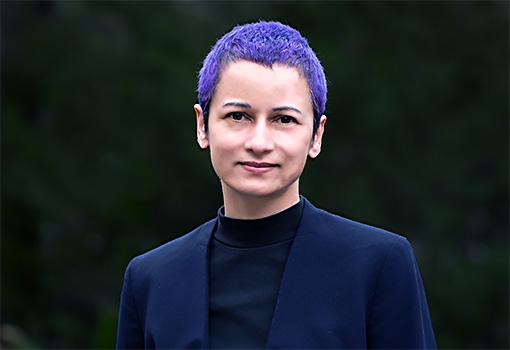
Computer science assistant professor Misha Sra. Photograph by Lilli McKinney
Jun 29, 2023
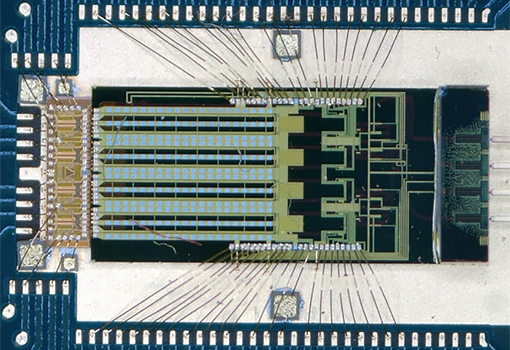
An image of the newly developed transmitter assembly. The small, brownish chip on the left is the electronic integrated circuit (EIC), and the larger, black-and-gold chip on the right is the photonic integrated circuit (PIC). The long structure on the left side of the PIC is the modulator, which converts the electrical signal into an optical one. Light gets coupled into and out of the chip through the fibers on the right side of the PIC. Everything is mounted on a printed circuit board (PCB), with gold wire bonds connecting the chips. Data flows from left to right, where the incoming electrical signal gets amplified by the EIC, converted to an optical signal by the PIC, and sent out via fiber to its destination.
Jun 22, 2023
Holistic co-design of photonics, electronics, and packaging enables faster, more-efficient data transfer.
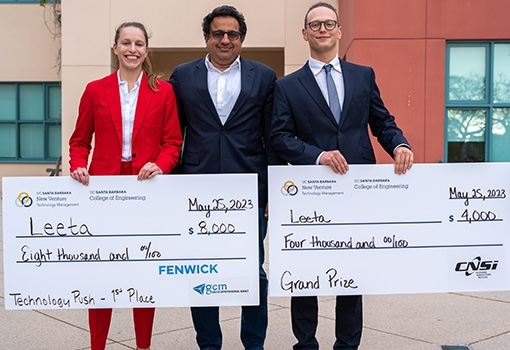
Leeta team members, Kira Wyckoff (left)) and Linus Kautzsch (far right), with their advisor Ram Seshadri
Jun 01, 2023
The team received $12,000 in prizes for their novel manufacturing process to produce high-demand battery materials.
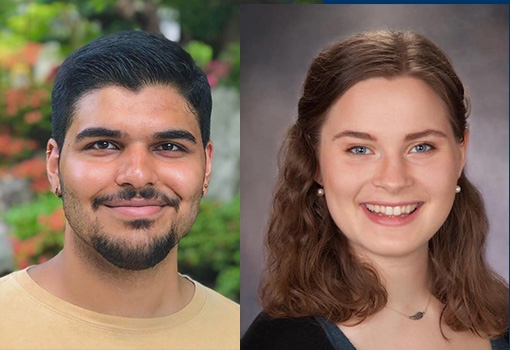
Materials PhD students Tanay Tak (left) and Bailey Rhodes, 2023 National Defense Science and Engineering Graduate Fellows
May 24, 2023
Pair of materials PhD students win prestigious fellowships from the Department of Defense.
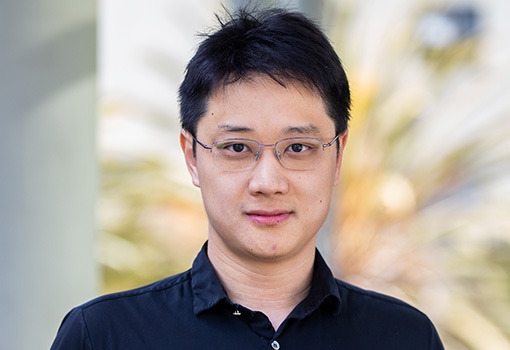
UCSB postdoctoral researcher Chen Shang
May 16, 2023
A UCSB postdoctoral scholar earns international recognition for his innovative research.

The 2023 New Venture Competition Finals will be on Thursday, May 25.
May 08, 2023
The six teams will compete for thousands of dollars in prize money during the NVC Finals on Thursday, May 25.
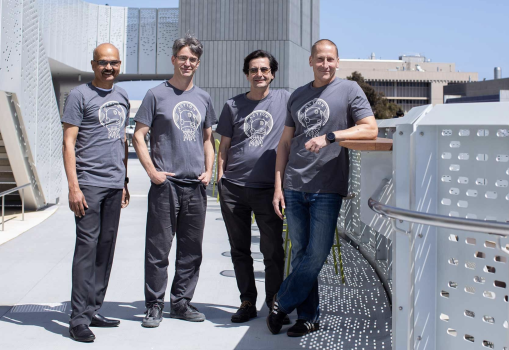
From left to right: Ambuj Singh, Christopher Kruegel, Joao Hespanha, Giovanni Vigna; Photo Credit: Matt Perko
May 04, 2023
UCSB will serve as the lead in a five-year, $20 million project to establish the Institute for Agent-based Cyber Threat Intelligence OperatioN (ACTION).
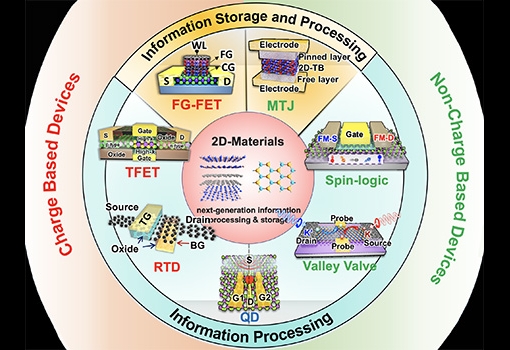
An array of charge-based and non-charge-based devices built with 2D materials may enable next-generation information processing and storage technologies. Four of the most promising devices — the spin-FET and the TFET (both for processing) as well as the FG-FET and the MTJ (both for storage) — are covered in the article. Illustration by Arnab Pal
Apr 11, 2023
New devices from Kaustav Banerjee’s lab show promise for next-generation information processing and storage.
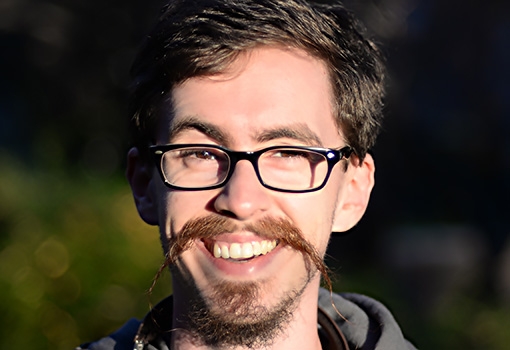
Assistant Professor Johanthan Balkind.
Mar 20, 2023
He plans to use microarchitectural checkpointing to redesign processors to improve cloud-based computing.

The Perito Moreno Glacier in Argentina, as seen from the International Space Station on Feb 21, 2012. Photograph courtesy of NASA
Mar 17, 2023
New NASA-funded research will build next-gen tech to better measure climate
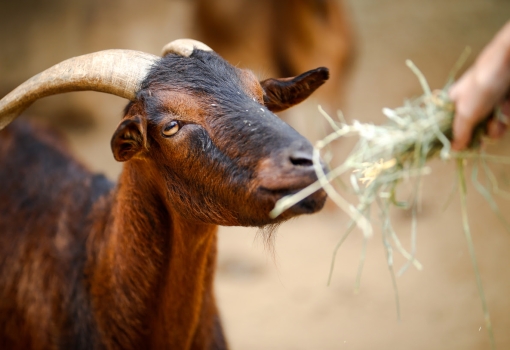
Goats and other ruminants host anaerobic microbes that can break through tough plant cell walls to gain the nutrition behind them. Photograph by Lillian McKinney
Mar 15, 2023
Researchers prove that tough, woody lignin can be broken down in an anaerobic environment.
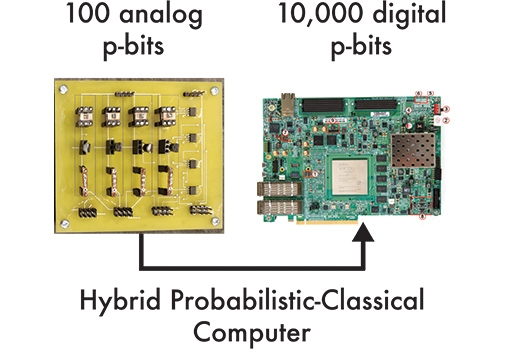
The image shows a hybrid computer where analog p-bits using magnetic nanodevices are combined with digital p-bits that will be used for energy-efficient machine learning discussed in the article.
Feb 02, 2023
Kerem Çamsari has received an Early CAREER Award to develop probabilistic computing, which could be an important step on the way to quantum computers.
- ‹ previous
- 5 of 23
- next ›

